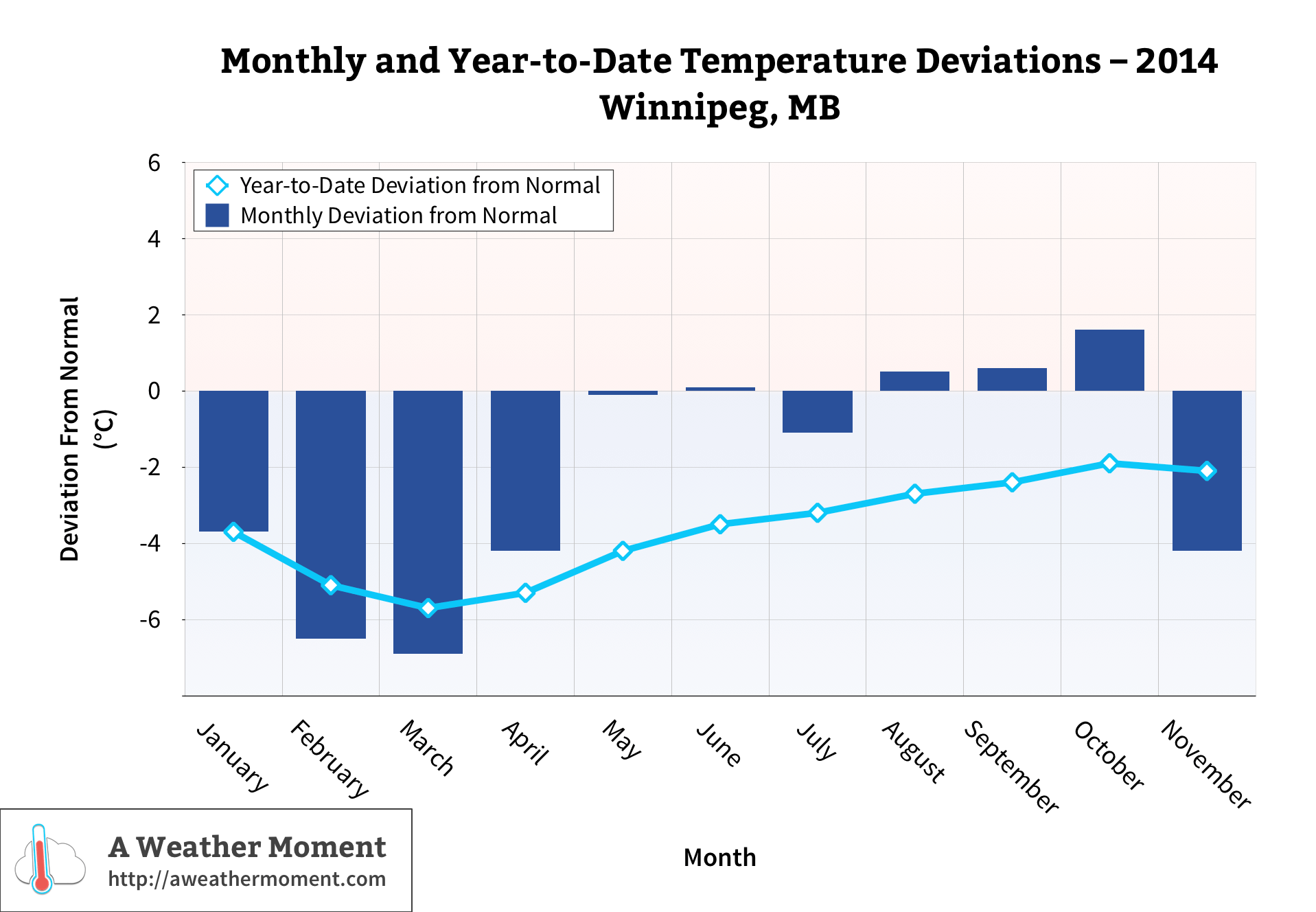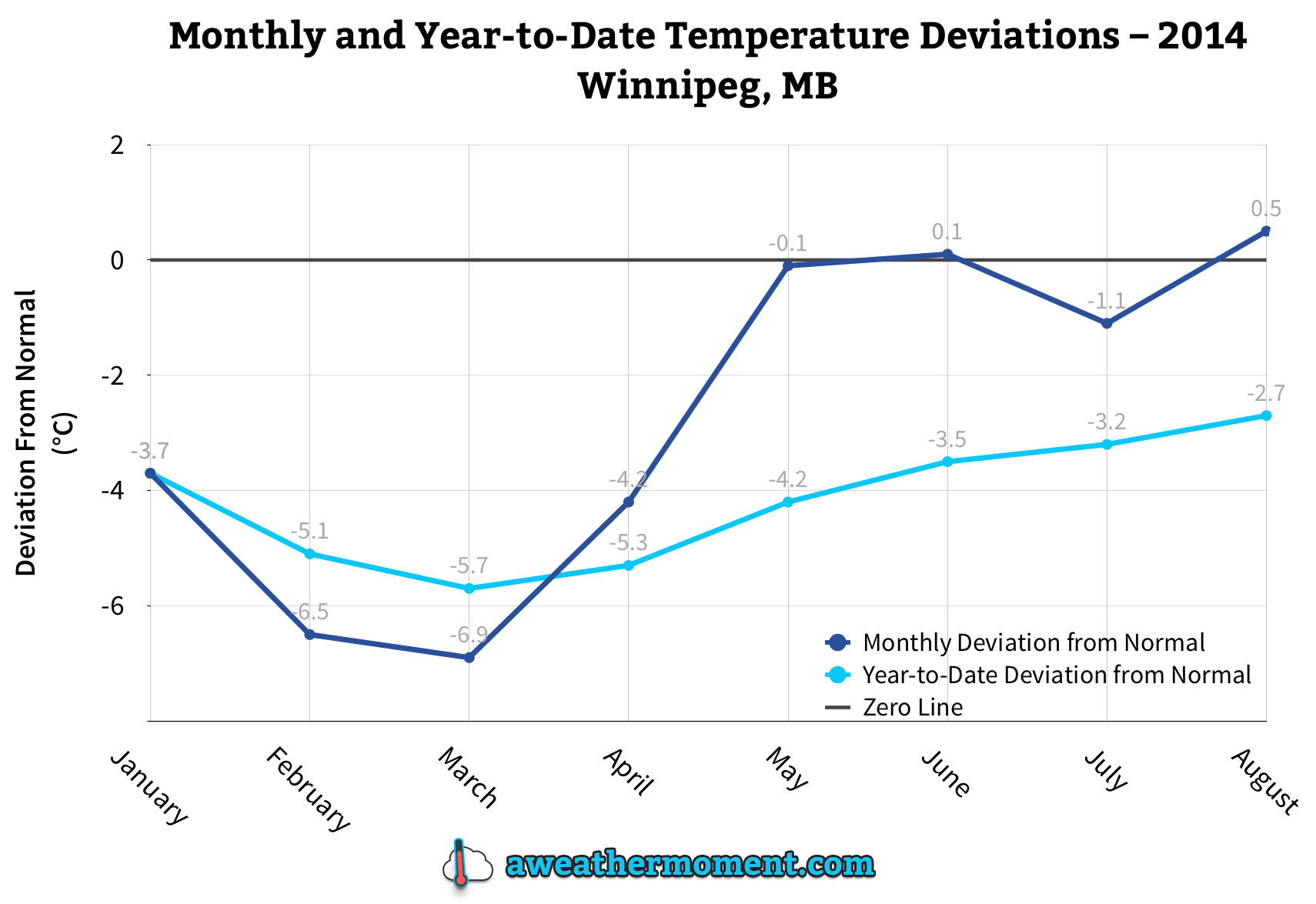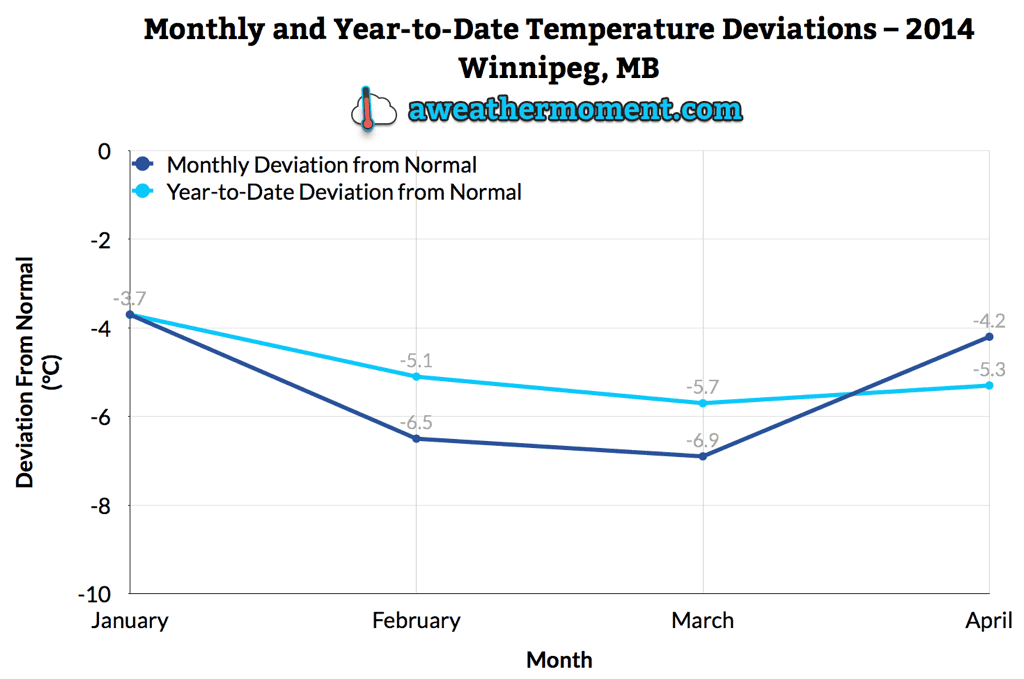Wow, what a fall temperature-wise in southern Manitoba this year! From record July-like heat in late September to January-like cold in November, we saw the extremes of all seasons… Here are the average temperature and total precipitation rankings for fall 2014 in Winnipeg:
| Category | Fall 2014 Average/Total |
Rank |
|---|---|---|
| High Temp. | 9.1°C | Tied 49th coldest |
| Mean Temp. | 3.8°C | Tied 48th coldest |
| Low Temp. | -1.5°C | Tied 53rd coldest |
| Rainfall | 47.3 mm | 24th least |
| Snowfall | 18.2 cm | Tied 46th least |
| Precipitation | 59.7 mm (est.) | 18th driest |
The meteorological fall (Sep-Oct-Nov) averaged 3.8°C or 0.7°C below the 1981-2010 normal. The negative anomaly was due to a frigid second half of November. September and October actually averaged warmer than normal with anomalies of +0.6°C and +1.6°C respectively. November on the other hand finished 4.2°C colder than normal with an average of -8.8°C, the 22nd coldest November on record since 1872 and the coldest since 1996.
Record Heat & Humidity In Late September
The dramatic burst of July-like heat we had in late September was perhaps the top weather event of fall 2014. The bulk of the warmth occurred September 22 to 27 with 6 of those days seeing highs over 25°C, a good 10-15°C above normal for that time of year. Overnight lows remained well into the teens.
September 26 was the hottest day with a high of 30.2°C at Winnipeg Airport, just shy of the old record of 31.7°C in 1952. However, it was even hotter in southwestern Manitoba where the heat was literally unprecedented for so late in the season (at least since records began). In Brandon, highs of 34.0°C and 32.8°C on the 25th and 26th respectively were the hottest on record for so late in the season since 1890. The provincial hotspots during the hot spell were Swan River and Wawanesa with maximums of 35.1°C!
In Winnipeg, only 1 temperature record was broken; a record high minimum of 17.4°C on September 26. This was the warmest minimum temperature for so late in the year since 1872. Humidity was the main story with dewpoints in the teens and humidex values in the 30’s. In fact, 6 daily high dewpoint records were broken in Winnipeg during the warm spell, with a maximum dewpoint of 18.1°C on September 26. A maximum humidex value of 35.8 on the 26th was the latest occurrence of humidex over 35 on record since 1953.
October Warmth & January in November
After a brief cool down early October, things warmed up again mid-month with highs commonly in the teens. 2 days exceeded 20°C. A high of 20.6°C on October 24 was the warmest for so late in the year since 1990. Thanks to generally warm conditions in October, The Forks weather station did not report its first freeze until October 30!
Of course, winter came in viciously in mid November with a prolonged cold snap lasting until the beginning of December. A low of -29.6°C at Winnipeg Airport on November 26 was the coldest in November since 1996. We only reached a measly high of -19.3°C on the 26th and 30th, the coldest highs in November since 1985.
Dry Fall
It was also a fairly dry fall, as many of you have probably noticed. Only around 60 mm of precipitation fell in Winnipeg, making it about the 18th driest fall on record since 1872. October was driest with just 4.9 mm of precipitation (all rainfall), the 3rd driest October on record.
The Year So Far
2014’s standing in terms of temperature has improved (warmed) slightly since the summer summary in September, thanks to warmer conditions in September and October. This January to November period averaged 2.3°C or 2.1°C below the 1981-2010 normal for the period. It is the 22nd coldest since 1873 and coldest since 1996, which is an improvement from the 17th coldest January to August period.

391.4 mm of rain has fallen this year up to now, which is actually about 37 mm below normal for an entire year. The deficit in rainfall can be attributed to a very dry fall and below normal rainfall in the spring.



